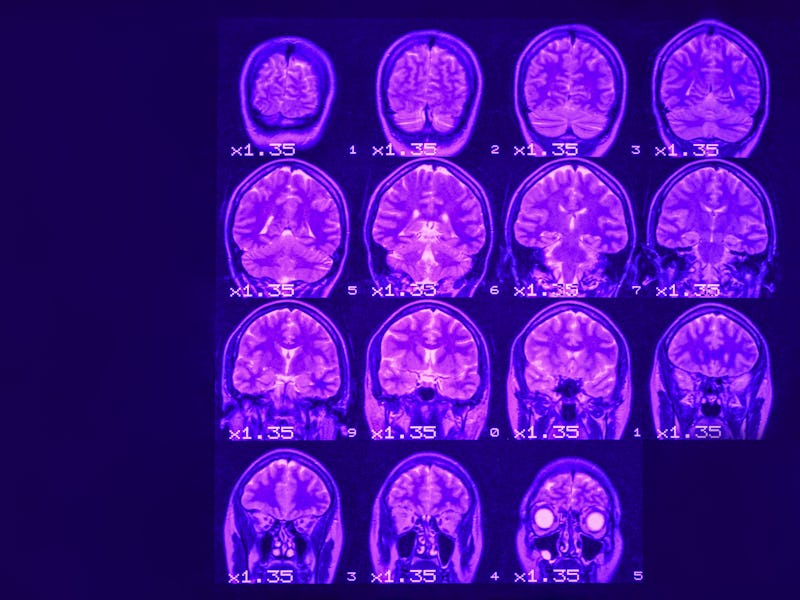Learn something new about solar energy, depression, your feet, and oysters

Good Monday morning. We have four stories today that might just change how you think about sustainable energy, mental health, your feet, and oysters. Read on to learn why.
And be sure to open Tuesday’s newsletter for more on a special issue we have been working on that is all about the next 100 years on planet Earth.
I’m Nick Lucchesi, editor-in-chief at Inverse, and this is Inverse Daily. I’m glad you’re here.
This is an adapted version of the Inverse Daily newsletter for April 19, 2021. Subscribe for free and earn rewards for reading every day in your inbox.
The Tesla Energy Plan is aimed at people who own solar panels and a Tesla Powerwall battery. The battery stores solar energy so it can power the house even when the Sun is not shining.
Tesla Powerwall video shows fairytale-like home powered by solar — An architect has spent the past decade tweaking his eco-friendly home of the future — and now he’s handing over more control to Tesla, reports Mike Brown:
Richard Hawkes’ house, nestled in the Kent countryside in England, is playing host to a new era of Tesla technology.
The architect’s eco-friendly home, which featured in a 2009 episode of British homebuilding show Grand Designs, is one of 65,000 buildings certified worldwide as a Passivhaus, meaning it uses minimal energy for heating and cooling.
Related stories:
- How to get Tesla Solar Roof in your area: 3 tips from an owner
- Video shows how Tesla Solar Roof tackles snow
- Watch The Boring Company’s first public tunnel in action
Could this be better for your depression or anxiety than, say, Lexapro?
Are magic mushrooms better than antidepressants? — There’s a chance psilocybin could once more enter the mainstream as a mental health treatment, reports Sarah Sloat:
Why aren’t people with depression prescribed magic mushrooms instead of Zoloft or Prozac?
There’s a chance psilocybin could enter the mainstream. The past decade has seen a scientific renaissance around the therapeutic use of psychedelics when paired with therapy.
Related stories:
- Cancer patients say psilocybin can be both therapy and “a beautiful experience”
- Neuroscientists uncover how magic mushrooms “rebalance” the brain
- Magic mushrooms might rebalance the brain — study
One surprising way robot lawnmowers will help the Earth — Robotic lawnmowers have been around for more than a decade, but with self-driving technology under the hoods of makers like Husqvarna, Roomba, and others, Sarah Wells reports on why you need to buy one now:
Like it or not, mowing the lawn has become an inescapable American chore for many Americans. But there’s a larger than expected environmental impact — up to five percent of the nation’s total air pollution, and that’s just from the engines. An hour of lawnmowing may have the same emissions as a 100-mile road trip. And that doesn’t even consider collateral like spilled gas and leaking oil. Instead of ripping up lawns across the country, roboticists have another solution that could save emissions as well as time: Roomba-like robotic lawnmowers.
Related stories
- A veteran lawnmower racer on what it takes to zip at 60 miles per hour
- Your lawn has a dirty little secret: It’s not as green as you think
- Scientists solve fairy circle mystery with math
Comprised of 26 bones, 33 joints, and over 100 ligaments and muscles, feet are a sophisticated blend of different functions and needs.
Should you exercise your feet? — A foot can't grow like a bicep, but it can become stronger, writes Sam Reiss:
When we talk about working out, we talk about muscles: how to build and rest them, how to feed them, and how to avoid injury. This makes sense since muscles seem to be the body parts most amenable to change. You lift, you eat, you sleep — and they grow.
But is that focus too narrow an approach to strength building? What about other body parts that can’t be strengthened traditionally — that don’t grow in size like a bicep — but are involved in our lifts and need our attention?
What about feet?
More stories like this one:
- Read more Leg Day Observer columns
- Weightlifting: 6 strategies to conquer back pain
- Can you lift weights too much? How to get stronger, sustainably
Are oysters all they are cracked up to be?
Scientists debunk a long-held theory about oysters — Can aphrodisiac foods really stimulate your sex life? The answer is chemically complicated, writes Sarah Wells:
Whether it be ancient humans sharing a fresh kill or blind-daters separated by Covid-19 having a Zoom dinner date, eating together is primal.
It’s no wonder humans have been on a centuries-long quest to discover how foods can make us feel sexy, too.
Related stories:
- Scientific discovery may push an aphrodisiac mushroom into the mainstream
- Cordyceps: Ancient sexual energy mushroom is about to go mainstream
- How “Cobra Sexual Energy” got the Supreme Court all hot and bothered
That wraps up this Monday edition of Inverse Daily. I would like to thank you for reading so loyally! You can follow me on Twitter at @nicklucchesi, where I share some of my favorite stories from Inverse every day. We will see you tomorrow.